Sir Robert de Ogle aka Sir Robert Ogle (c. 1306-1362), baron of Ogle and Hepple, was probably born in 1306.
Robert Ogle married Joan Hepple. She was granddaughter of Robert Hepple and Margaret Chartenay, daughter and co-heiress of Sir Richard Chartney and his wife Ethama. Her grandfather was the grandson Richard Chartenay and Matilda, his wife, daughter and co-heiress with her sisters, Elizabeth and Annotta, of William fitz William of Hepple.
Robert Ogle became head of a Northumberland family long settled at Ogle in the parish of Whalton, eight miles south-west of Morpeth. 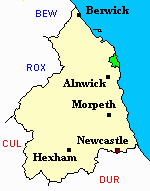
The family rose to importance in consequence of the border warfare with Scotland.
In 1870-72, John Marius Wilson’s Imperial Gazetteer of England and Wales described Ogle like this:
OGLE, a township in Whalton parish, Northumberland; 6½ miles S W of Morpeth. Acres, 2, 117. Pop., 117. Houses, 21. Ogle Castle here was long the seat of the ancient family of Ogle; was built, or restored and strengthened, in 1340, by Robert de Ogle; was a long quadrangular pile, with towers at the four corners, and surrounded by a double moat; was the place to which Copeland took the captive King David of Scotland, after the battle of Neville’s Cross; and is now represented chiefly by fragments incorporated with a picturesque manor-house of the time of Charles I., and by remains of the moat.
On March 28, 1329, he or his father Robert Ogle received a royal pardon for all homicides, felonies, etc., with others who aided the king in the late rebellion, and was probably soon after married, for on May 10, 1331, his father-in-law Sir Robert Hepple had license to entail upon him and Joan Hepple, his wife, lands in
Robert Ogle was a soldier at war as his military records indicates:
When David Bruce penetrated as far as Newcastle in August 1341, Robert Ogle distinguished himself by effecting the capture of five Scottish knights, and in the same year Edward III gave him permission to castellate his manor-house at Ogle, together with the privilege of free warren on his demesne lands. Sir Robert Ogle was granted a licence to crenellate in 1341. ‘Ogle Castle… may have owed something to the five newly-knighted Scottish men-at-arm whom its builder, Robert de Ogle, captured… and who were ransomed ‘for a great weight of gold.”
Some remains of Ogle Castle, which was surrounded by two moats, are still to be seen.
Robert Ogle shared with John de Kirkby, bishop of Carlisle, the honors of the resistance to the Scottish foray into Cumberland in 1345, when Sir William Douglas, the Knight of Liddesdale, burnt Carlisle and Penrith. In a skirmish with a detachment of the invaders, in which the bishop was unhorsed, Robert Ogle ran the Scottish leader Alexander Stragan (Strachan) through the body with his lance, but was himself severely wounded.
Robert Ogle fought at the battle of Neville’s Cross, or Durham as it was officially called, on October 17, 1346, and took three prisoners— the Earl of Fife, Henry de Ramsay, and Thomas Boyd (Fwdera, v. 533). There is a tradition that the captive king David was taken in the first place to Ogle Castle.
The War of Roses in late Medieval England was essentially a power struggle between noble factions who were fighting for the right to the throne of England.
Robert Ogle was in command at Berwick as lieutenant of William, lord Greystock, who was with the king in France, when the Scots took the town by surprise on the night of November 6, 1355 (dugdale, i. 741). He made a brave resistance, in which two of his sons fell,and succeeded in holding the castle till help came (Hot. Pari. iii. 11). Greystock was condemned to forfeiture of life and property, but was afterwards pardoned on pleading that he had the king’s orders to go to France.
Robert Ogle of Choppington, Northumberland was a leading Yorkist in First Battle of St. Albans May 22, 1455.
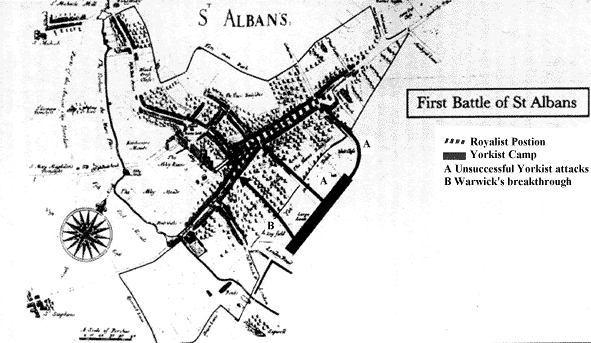 The first battle of the “Wars of the Roses” was fought out between the retinues of King Henry VI’s supporters and those of the Duke of York and his allies. The latter, along with his kinsmen the Earls of Warwick and Salisbury, raised around 3.000 men and attacked Henry’s army of 2,000 men who had barricaded themselves inside the town of St Albans. After the Yorkist’s initial attacks had been repulsed, Warwick’s men forced their way into the town and the King’s forces were overwhelmed in the street fighting that ensued. The Duke of Somerset, the Earl of Northumberland, Lord Clifford, plus about 50 other notable Lancastrians, were killed in the fighting.
The first battle of the “Wars of the Roses” was fought out between the retinues of King Henry VI’s supporters and those of the Duke of York and his allies. The latter, along with his kinsmen the Earls of Warwick and Salisbury, raised around 3.000 men and attacked Henry’s army of 2,000 men who had barricaded themselves inside the town of St Albans. After the Yorkist’s initial attacks had been repulsed, Warwick’s men forced their way into the town and the King’s forces were overwhelmed in the street fighting that ensued. The Duke of Somerset, the Earl of Northumberland, Lord Clifford, plus about 50 other notable Lancastrians, were killed in the fighting.
Robert Ogle and Joan Hepple occur as owners of Thursby in Cumberland, which came into the family in the time of Edward II.
Sibling Relationships
Robert Ogle (xxx) siblings
Joan Hepple’s (xxx) siblings
Children of Robert Ogle and Joan Hepple:
| Child | Born | Married | Departed |
| Robert Ogle |
1330 | Helen Bertram | 1355 |
| Thomas Ogle | |||
| Joan Ogle | William de Swinburne |
Robert de Ogle lost two of his sons in battle. His son Robert Ogle (1330-1355) married Ellen Bertram, only child and heiress of Sir Robert Bertram of Bothal, three miles east of Morpeth, who in 1343 obtained a license to build the castle there. Their son Robert Ogle (1351-1409), who succeeded his grandfather Robert de Ogle was under age and John Philipot became his guardian.
In 1352, Sir Robert Ogle received a commission appointing him arrayer of the forces in Northumberland. He was at Capheaton in 1354 and a justice at Hexham.
In 1360, a charter of his granted at Ogle, contains his seal, an armorial fesse between three crescents, on the sinister side of the shield, a helmet out of which issues a plume (to which is added the words S + Roberti. de + Oggle.
Sir Robert Ogle died on the feast of Corpus Christi on June 16, 1362.
His inquisitions post mortem were taken in 1363, 1364, 1365, 1367, 1369, and 1373 from which it appears Robert Ogle held Saltwick, Ogle, Twisell, Shilvington, Aldworth, Long Witton, Seaton, Woodhorn, Thirnham, Fowberry, North Middleton, Dissington, Aldesheles, Roulay, the Wallfield, Ritrinum, Slaveley, Hepple, Tossan, Warton, Flotterton, High Trewhit, Low Trewhit, Sewingshields, Herowdon, Blackheddon, Slaughter, Alwinton, in this county, and Thursby, etc., in Cumberland, holding some of these in chief.
On November 16 , 1362, Sir Robert Ogle is described as deceased and, with his surviving widow, had held conjointly half the barony of Hepple, but by a grant under the king’s licence the escheator is forbidden to intromit. Joan Hepple died on the 19th of March, 1364/65. Her inquisitions post mortem were taken in 1366, and she held Saltwick and Thursby in dower.
Resources
Dictionary of National Biography
Fourteenth century England, Volume 2 by Nigel Saul, Chris Given-Wilson
King, D.J.C., 1983, Castellarium Anglicanum (London: Kraus) Vol. 2 p. 339
Cat. Inquisitionum post mortem, ii. 254
Rotuli Parliamentorum; Calendiirium Inquisitionum post mortem, ed. Record Commission; Rymer’s Fcedera, original edition; Walsingham’s Historia Anglicana in the Rolls Ser.; Wyntoun’s Chronicle in the Historians of Scotland; Dugdale’s Baronage; Nicolas’s Historic Peerage, ed. Courthope; Hogdson’s Northumberland; Arctueologia /Eliana; Hexham Priory (Surtees Soc.); Culendariutn Rotulorum Patentium, p. 229, and Calendarium Rotulorum Originalium, p. 801.

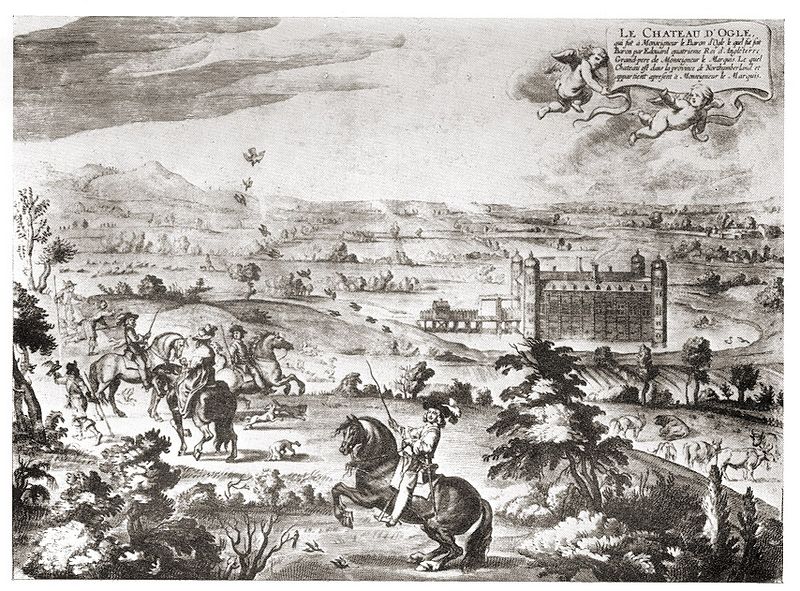
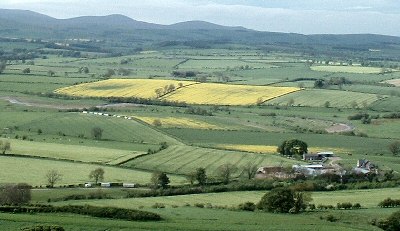


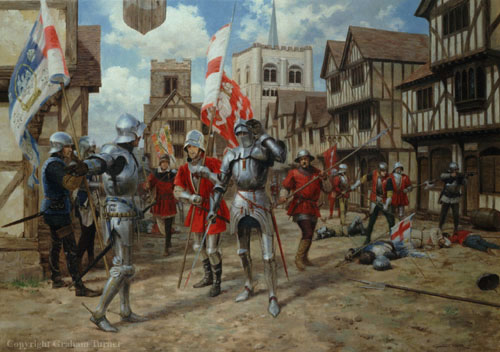
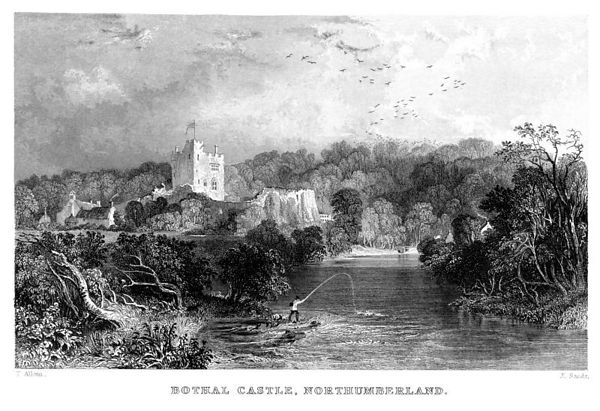

I am a direct descendant of all the Ogles you mentioned, up to William who moved to Causley Park, Northumberland.